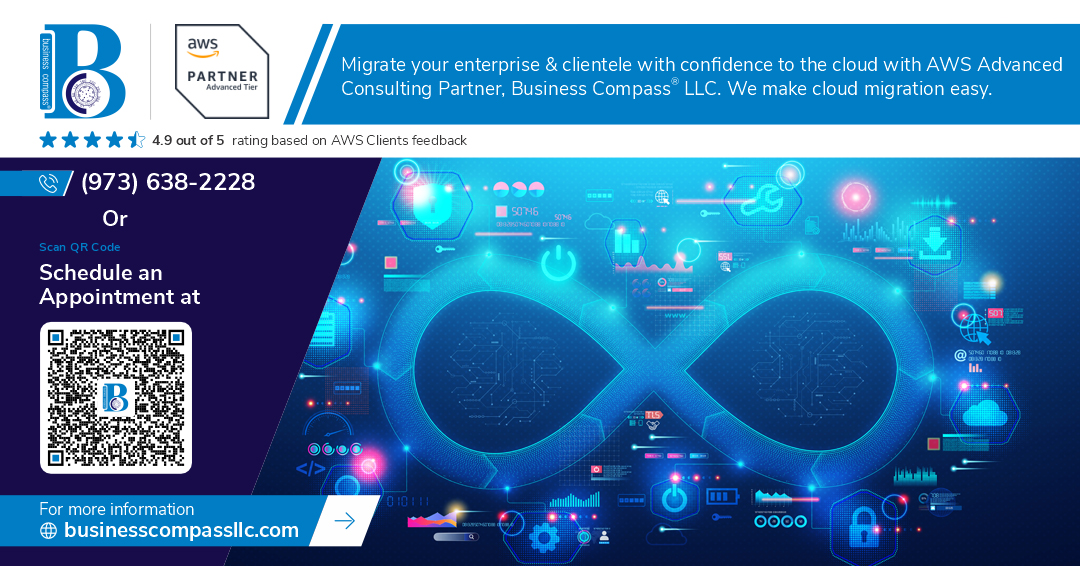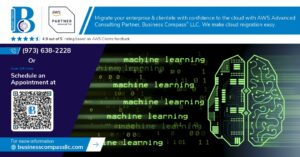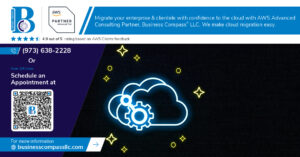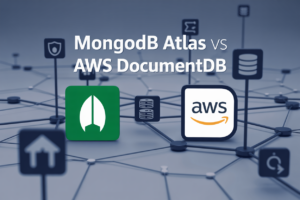“DevOps or SRE? Platform Engineering or DevOps?” Ever been in a meeting where these terms flew around like confetti, with everyone nodding wisely while secretly wondering what the actual difference is? You’re not alone – 68% of tech professionals admit they use these terms interchangeably despite knowing they shouldn’t.
I’m about to clear this mess up once and for all. No fluff, no corporate speak – just straight talk about what separates DevOps, SRE, and Platform Engineering in the real world.
The DevOps vs SRE vs Platform Engineering confusion isn’t just semantic – it’s costing companies millions in misaligned teams and redundant tooling. Teams calling themselves “DevOps” while practicing SRE principles (or vice versa) is more common than you’d think.
But here’s where it gets interesting: the lines between these disciplines aren’t nearly as clear-cut as the experts would have you believe…
The Evolution of IT Operations: From Traditional Models to Modern Approaches
The Evolution of IT Operations: From Traditional Models to Modern Approaches
A. The limitations of traditional IT operations and why change was needed
Traditional IT ops was a nightmare of silos and finger-pointing. Developers threw code over the wall, ops scrambled to make it work, and customers suffered through endless delays. Something had to give. Teams were drowning in manual processes while businesses demanded faster delivery and better reliability. This broken model sparked a revolution.
B. The birth of DevOps: Bridging development and operations
DevOps crashed onto the scene around 2009, challenging the sacred separation between builders and runners. The premise was simple but revolutionary: tear down the walls between teams. By combining development and operations responsibilities, organizations could deploy code faster and more reliably. Automation replaced manual handoffs, collaboration trumped isolation, and continuous improvement became the norm.
C. The emergence of Site Reliability Engineering (SRE) at Google
While DevOps was gaining steam in the wider world, Google was cooking up its own solution: Site Reliability Engineering. Born from the need to manage massive-scale systems, SRE applied software engineering principles to operations problems. These engineer-operators used error budgets, service level objectives, and automation to balance reliability with innovation. SRE turned reliability from art to science.
D. Platform Engineering as the newest evolution in the operational landscape
Platform Engineering has emerged as DevOps’ natural evolution – building internal developer platforms that abstract away infrastructure complexity. Instead of teaching every developer DevOps skills, platform teams create self-service tools that make deployment effortless. They build paved roads for developers, combining the best of DevOps culture with Google-scale automation approaches. The focus shifts from “doing DevOps” to enabling productivity.
DevOps Deep Dive: Principles, Practices, and Cultural Impact
DevOps Deep Dive: Principles, Practices, and Cultural Impact
A. Core DevOps principles: collaboration, automation, and continuous improvement
DevOps isn’t just another tech buzzword—it’s a revolution in how teams build software. At its heart, DevOps breaks down the walls between development and operations teams. Gone are the days of throwing code “over the wall” and hoping for the best. Instead, everyone shares responsibility for the entire product lifecycle, automating repetitive tasks and constantly finding ways to do things better.
B. Key DevOps practices that transform software delivery
The magic of DevOps happens when you put these game-changing practices to work:
- Continuous Integration (CI): Developers merge code changes frequently—sometimes multiple times daily—catching integration problems early.
- Continuous Delivery (CD): Software is always in a releasable state, ready to deploy with minimal human intervention.
- Infrastructure as Code (IaC): Managing infrastructure through code rather than manual processes, making environments consistent and reproducible.
- Microservices Architecture: Breaking applications into smaller, independent services that can be developed, deployed, and scaled separately.
- Monitoring and Observability: Real-time insights into application performance and user experience.
C. The cultural shift required for successful DevOps implementation
Here’s the truth about DevOps that many organizations miss: the tools are the easy part. The real challenge? Culture change.
Successful DevOps demands:
- Shared responsibility instead of finger-pointing
- Psychological safety to experiment and occasionally fail
- Transparency across teams and systems
- Breaking down specialized silos
- Celebrating small wins frequently
Companies that nail the cultural aspects see dramatically better results than those who simply buy DevOps tools and hope for the best.
D. Common DevOps tools and technologies
The DevOps toolchain is vast, but these categories cover the essentials:
| Category | Purpose | Popular Tools |
|---|---|---|
| Source Control | Version tracking & collaboration | Git, GitHub, GitLab |
| CI/CD | Automate build, test & deployment | Jenkins, CircleCI, GitHub Actions |
| Infrastructure as Code | Infrastructure automation | Terraform, Ansible, Puppet |
| Containerization | Consistent environments | Docker, Kubernetes |
| Monitoring | System health & performance | Prometheus, Grafana, New Relic |
| Communication | Team collaboration | Slack, Microsoft Teams |
The best DevOps teams don’t just collect tools—they create integrated toolchains that work seamlessly together.
E. Real-world DevOps success stories and transformation metrics
Amazon deploys code every 11.7 seconds on average. Netflix engineers push to production thousands of times daily. These aren’t flukes—they’re the results of committed DevOps transformations.
The numbers tell the story:
- 46x more frequent deployments
- 440x faster lead time from commit to deploy
- 5x lower change failure rate
- 96x faster recovery from incidents
Organizations like Capital One, Target, and Etsy have all shared how DevOps practices transformed not just their technology delivery but their entire business agility. The pattern is clear: companies that embrace DevOps principles outperform those stuck in traditional models.
Site Reliability Engineering (SRE) Unpacked
Google’s approach to service reliability and scalability
SRE was born at Google when Ben Treynor Sloss asked a simple question: “What happens when you ask software engineers to design an operations team?” The answer revolutionized how we handle reliability. Google’s approach focuses on treating operations as a software problem, using automation to handle toil, and implementing systems that scale without linear headcount growth.
The SRE toolkit: SLIs, SLOs, SLAs, and error budgets explained
Ever tried measuring reliability? SREs have it down to a science:
- SLIs (Service Level Indicators): The actual measurements (like latency or error rate)
- SLOs (Service Level Objectives): Your reliability targets (99.9% availability)
- SLAs (Service Level Agreements): Formal contracts with consequences for missing targets
- Error budgets: The allowed “unreliability” that lets you ship features faster
This toolkit transforms vague reliability goals into concrete, actionable metrics.
How SREs balance reliability with innovation velocity
The genius of SRE isn’t just making systems reliable—it’s knowing when to pump the brakes on reliability obsession. Error budgets are the secret sauce here. When your service is running smoothly within SLO targets, you’ve got budget to spend on risky deployments or experimental features. When you’re burning through that budget? Time to focus on stability. This creates a natural equilibrium between innovation and reliability.
The critical skills that make successful SREs
SREs aren’t just ops people who code or developers who understand infrastructure. They’re a unique breed combining:
- Deep systems knowledge
- Software engineering expertise
- Incident management skills
- Data analysis capabilities
- Automation mindset
- Communication prowess
What makes great SREs stand out isn’t just technical skill—it’s their ability to see both the forest and the trees while communicating effectively across engineering teams.
Platform Engineering: Building the Foundation for Developer Success
Platform Engineering: Building the Foundation for Developer Success
A. Defining the platform engineering approach and its core objectives
Platform engineering isn’t just another tech buzzword—it’s the secret sauce that’s transforming how software gets built. At its core, platform engineering creates specialized infrastructure that lets developers focus on coding instead of wrestling with complex deployment pipelines. Think of it as building a highway system so developers don’t have to pave their own roads every time they need to deliver software.
B. How internal developer platforms enhance productivity
Internal developer platforms (IDPs) are the game-changers your engineering teams didn’t know they needed. By abstracting away infrastructure complexity, these platforms slash the cognitive load that’s been dragging your developers down. A well-designed IDP eliminates those painful “works on my machine” conversations and cuts deployment time from days to minutes. Developers get back to what they love—building cool features instead of debugging YAML files.
C. Self-service capabilities and why they matter
Self-service capabilities are the difference between a platform that collects dust and one that transforms your organization. When developers can provision environments, deploy code, and troubleshoot issues without filing tickets, magic happens. Waiting for ops approvals becomes ancient history. Teams that implement robust self-service report up to 80% reduction in deployment lead times and happier developers who aren’t stuck in approval purgatory.
D. The relationship between platform engineering and developer experience
Developer experience isn’t a nice-to-have—it’s the whole point of platform engineering. The best platforms feel invisible, removing friction rather than adding new tools to learn. They’re built with empathy, understanding the daily struggles of writing, testing, and shipping code. When you nail developer experience, productivity soars, onboarding time plummets, and your retention numbers make HR high-five the engineering team.
E. Key components of a successful platform engineering strategy
A winning platform engineering strategy blends technology with human psychology. Start with standardized templates and golden paths that guide teams toward best practices without forcing them into rigid workflows. Layer in observability that provides meaningful insights, not just metrics nobody understands. Add documentation that people actually want to read, and automation that eliminates tedious work. Finally, cultivate a feedback loop that treats developers like valued customers, not just users.
Key Differences Between DevOps, SRE, and Platform Engineering
Key Differences Between DevOps, SRE, and Platform Engineering
A. Focus areas and primary responsibilities compared
Think of DevOps as the relationship counselor between development and operations teams. SRE is the detail-obsessed engineer with uptime metrics tattooed on their arm. Platform Engineering? They’re building the digital playground where developers can deploy without begging for infrastructure permissions. Each approaches reliability differently, but they’re all trying to make software delivery less painful.
B. Philosophical and methodological differences
DevOps people won’t shut up about “culture” while SREs geek out over error budgets and mathematical approaches to reliability. Platform engineers? They’re busy building self-service portals and internal developer platforms so everyone else can do their jobs without drowning in YAML. DevOps preaches collaboration; SRE quantifies reliability; Platform Engineering standardizes infrastructure experiences.
C. Team structures and organizational placement
DevOps often exists as a mindset rather than a department. SRE teams typically sit alongside traditional operations, with direct escalation paths to engineering leadership. Platform teams? They’re the new kids, usually reporting to technical leadership but serving developers across the organization. Your company structure determines which model fits best – there’s no one-size-fits-all approach.
D. When to apply each approach based on organizational needs
Drowning in deployment drama? DevOps culture shifts might save you. Reliability nightmares keeping you up? SRE brings the metrics-driven stability you crave. Developer teams constantly reinventing infrastructure wheels? Platform Engineering creates standardized paths to production. Small startups benefit from DevOps principles, while enterprise organizations often need all three working in harmony.
Common Myths and Misconceptions Debunked
Common Myths and Misconceptions Debunked
A. “DevOps is just automation tools”
Many folks think DevOps is just about fancy tools and automation. But that’s like saying cooking is just about owning knives. DevOps is actually a cultural shift that breaks down walls between development and operations teams. The tools support the philosophy—they’re not the whole show.
B. “SRE is DevOps with a different name”
SRE isn’t just DevOps wearing a different hat. While both aim to improve reliability, SRE applies software engineering principles to operations problems and quantifies everything with metrics like SLOs. It’s like comparing a chef to a food scientist—related but with different approaches and goals.
C. “Platform Engineering replaces DevOps”
Platform Engineering doesn’t kick DevOps to the curb—it builds on it. Think of DevOps as establishing the cultural foundation, while Platform Engineering creates the technical foundation. They’re complementary pieces of the same puzzle, not competitors in a winner-takes-all match.
D. “These approaches only work for tech giants”
The myth that these practices only work for Google-sized companies is flat-out wrong. Small teams often implement these approaches more successfully because they have less organizational baggage. It’s not about company size—it’s about commitment to improvement and willingness to change.
E. “You must choose just one approach for your organization”
Forcing yourself to pick just one approach is like insisting you can only use one tool to build a house. Smart organizations blend elements from DevOps, SRE, and Platform Engineering based on their specific needs and challenges. The real magic happens in the mix.
Integration Strategies: Creating a Complementary Operational Framework
How DevOps, SRE, and Platform Engineering can work together
Think of these three disciplines as siblings, not rivals. DevOps brings the cultural shift and automation mindset. SRE adds reliability guarantees and error budgets. Platform Engineering delivers the self-service infrastructure that makes everyone’s life easier. When they collaborate, magic happens—developers ship faster, systems stay stable, and nobody gets paged at 3am for preventable issues.
Building an integrated toolchain across disciplines
Your toolchain shouldn’t look like a junk drawer. Smart teams build seamless pipelines where code flows from commit to production without friction. CI/CD tools connect with monitoring systems. Infrastructure-as-code templates feed into self-service platforms. Observability data informs both reliability targets and development priorities. The key? Standardization where it matters, flexibility where it counts.
Unified metrics and success measures
Ditch the siloed scorecards. When teams measure success differently, they optimize for different outcomes—and that’s a recipe for friction. Align around metrics that matter to everyone: deployment frequency, change failure rate, MTTR, and customer experience scores. Add team-specific metrics underneath that umbrella. This creates a shared language for success across engineering disciplines.
Organizational structures that support multiple approaches
The org chart can make or break your operational model. Embedding SREs within product teams creates reliability advocates close to the code. Platform teams should function as product teams themselves, with users being other engineers. Communities of practice that span organizational boundaries prevent knowledge hoarding and ensure best practices spread organically across teams.
Implementation Roadmap: Adopting Modern Operational Practices
Implementation Roadmap: Adopting Modern Operational Practices
A. Assessing your organization’s operational maturity
Ever tried fixing something without knowing what’s broken? Rookie mistake. Before diving into DevOps, SRE, or Platform Engineering, you need to know where you stand. Map your current processes, identify bottlenecks, and be brutally honest about your team’s capabilities. The gaps you find aren’t failures—they’re your roadmap to improvement.
B. Selecting the right approach for your specific challenges
One size fits nobody in the operational world. Your challenges are unique, so your approach should be too. Maybe you need DevOps’ cultural shift to break down silos. Perhaps SRE makes sense if reliability keeps you up at night. Or Platform Engineering could be your ticket if developer experience is dragging. Pick the path that solves your actual problems, not the one with the coolest name.
C. Building skills and capabilities within your teams
Skills gap? More like skills canyon for most organizations. Upskilling isn’t optional—it’s survival. Invest in training that matters: automation for everyone, observability expertise, security knowledge, and—crucially—collaboration skills. Create learning pathways that match both organizational needs and individual career goals. Remember, today’s junior engineer is tomorrow’s architecture mastermind.
D. Managing the transition and measuring progress
Transitions are messy. Accept that now. Start with small, high-impact wins to build momentum. Establish clear metrics from day one—deployment frequency, change failure rate, MTTR—whatever tells your specific success story. And communicate constantly. Nothing kills transformation faster than silence. Celebrate wins, learn from failures, and keep reminding everyone why this painful change is worth it.
Understanding the distinctions between DevOps, SRE, and Platform Engineering is crucial for organizations navigating modern IT operations. As we’ve explored, these approaches aren’t competing methodologies but complementary frameworks that can be integrated to create robust operational models. DevOps brings cultural transformation and automation, SRE adds reliability metrics and error budgets, while Platform Engineering delivers developer-friendly infrastructure and tooling that accelerates innovation.
The journey from traditional IT operations to these modern practices requires thoughtful planning and implementation. By busting common myths and focusing on integration rather than replacement, organizations can build a tailored operational framework that leverages the strengths of each approach. Whether you’re just beginning your transformation or refining existing practices, remember that success comes from adapting these principles to your unique organizational context rather than rigidly following any single methodology. Start by assessing your current challenges, then incrementally implement the aspects of DevOps, SRE, and Platform Engineering that will deliver the most value to your teams and customers.




















